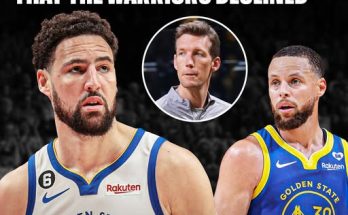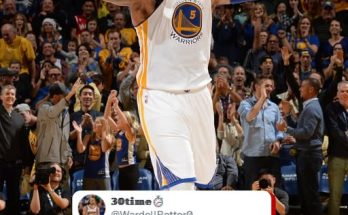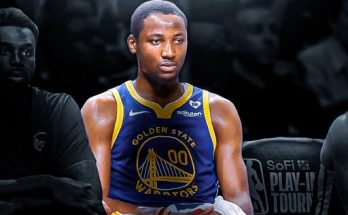Christian Koloko’s return to the Los Angeles Lakers on a two-way contract might not dominate national headlines, but it signals a shrewd and strategic front office move that could pay dividends down the stretch of the season. As the Lakers continue to navigate a Western Conference landscape teeming with towering big men and physical frontcourts, Koloko’s presence offers a defensive insurance policy, long-term upside, and valuable rotational flexibility. The Lakers clearly see potential in the 7-footer out of Cameroon who, despite some setbacks, still boasts one of the more intriguing profiles among young centers on the fringe of regular NBA minutes. For Koloko, this agreement isn’t just another transaction—it’s a second shot at showing he belongs in the league.
Christian Koloko was originally drafted in the second round (33rd overall) of the 2022 NBA Draft by the Toronto Raptors after a standout junior season at Arizona. Known for his rim protection, shot-blocking timing, and vertical presence, Koloko was viewed as a high-upside project with enough raw tools to develop into a rotational defensive anchor. During his rookie year in Toronto, he showed flashes of promise in limited minutes. He averaged 3.1 points, 2.9 rebounds, and 1.0 blocks in 13.8 minutes per game across 58 appearances. While those numbers don’t leap off the stat sheet, what stood out was his ability to change shots, run the floor well for his size, and remain poised even when overmatched. He was raw, but clearly coachable and committed to his development.
However, Koloko’s ascent stalled due to an unfortunate and serious health issue that sidelined him for the entire 2023-24 season. Reports later confirmed the issue was a blood clot in his lungs—an ailment that required extensive recovery and caution. The Raptors waived him in early 2024 to open up roster flexibility, and the basketball world waited to see if Koloko would return at all. That made his eventual appearance at Lakers Summer League action in Las Vegas all the more impressive. Koloko showed signs that the athleticism and defensive instincts that earned him praise in Arizona and Toronto were intact. More importantly, he looked healthy—mobile, active, and fully engaged.
The Lakers initially signed Koloko earlier in the offseason, likely as a camp body and two-way candidate. Now, with the official announcement of his re-signing to a two-way deal, it’s clear they see him as more than just a fill-in. Under the new CBA rules, two-way players are eligible to appear in up to 50 games without needing to be converted to a standard NBA contract. That gives the Lakers the flexibility to deploy Koloko strategically—especially when facing teams with dominant centers or when dealing with injuries to their big-man rotation.
At 7’0” with a 7’5” wingspan, Koloko brings elite measurables to the Lakers’ second unit. While his offensive game is still developing, the Lakers won’t need him to score. He fits their mold of long, switchable defenders who can protect the rim and clean the glass. Los Angeles had major issues with rim protection off the bench last year when Anthony Davis sat. Jaxson Hayes was serviceable in spurts but inconsistent. Christian Wood provided offense but little defensive deterrence. Koloko gives head coach JJ Redick a more traditional backup 5 option who can cover ground in drop coverage and contest shots without fouling.
Koloko’s role won’t be defined by counting stats—it’ll be defined by the stops he helps create, the vertical spacing he provides, and the energy he brings to second-unit stretches. If he can even be a poor man’s Clint Capela or Nerlens Noel at his peak, the Lakers will have secured an immensely valuable contributor at minimal cost. In the modern NBA, even defensive specialists need to find ways to stay on the court in playoff settings. That means refining footwork, building out passing reads from the short roll, and finishing through contact—areas where Koloko has reportedly made strides during private workouts and in team-organized sessions.
There’s also something to be said about the Lakers’ broader frontcourt vision. Koloko’s re-signing fits into a pattern of low-risk, high-reward signings aimed at balancing the roster without overextending financially. By committing a two-way slot to a 7-footer with NBA experience and real rim protection chops, the Lakers are hedging against both injury risk and matchup disadvantages. In the West, where teams like the Denver Nuggets (with Nikola Jokić), Minnesota Timberwolves (Rudy Gobert, Karl-Anthony Towns), and San Antonio Spurs (Victor Wembanyama) boast elite size and skill at the 5, depth at center is no longer a luxury—it’s a necessity.
The mentorship aspect shouldn’t be overlooked either. Playing behind Anthony Davis and training daily with a veteran like him can accelerate Koloko’s learning curve. Davis remains one of the most versatile defenders in NBA history, and Koloko—who already models much of his defensive approach on mobility and timing—can absorb technical and tactical lessons that few other environments would provide. Redick, for his part, has emphasized the importance of smart, switchable bigs who understand spacing and can rotate efficiently. Koloko’s profile checks all those boxes. If he can master the system and maintain conditioning, he may earn meaningful minutes before the All-Star break.
Another area that bodes well for Koloko is the Lakers’ investment in player development. Phil Handy and the Lakers’ staff have a strong track record of turning raw talent into rotation-ready assets. Whether it was Alex Caruso, Austin Reaves, or even players like Talen Horton-Tucker and Max Christie, the Lakers have routinely used their two-way and G-League infrastructure to incubate talent effectively. Koloko’s re-signing suggests the Lakers see a similar potential trajectory.
It’s not hard to imagine a scenario in which Koloko plays himself into a standard contract by the trade deadline—especially if he outplays expectations, or if the Lakers opt to move on from a veteran like Jaxson Hayes or Christian Wood in a consolidation trade. A lot depends on how the rotation shapes up and how many of the Lakers’ offseason additions crack the primary rotation. But in a league that’s constantly chasing two-way talent, Koloko has a chance to rewrite his story.
Beyond the court, Koloko’s resilience stands out. The mental toll of being sidelined with a life-threatening condition can’t be overstated. His ability to bounce back, trust the process, and return to professional-level fitness is a testament to his mindset and dedication. That resilience aligns with the ethos the Lakers want in their locker room—especially among younger players who can grow into core contributors.
This two-way contract represents more than a fallback option. For Koloko, it’s a platform. For the Lakers, it’s a well-placed bet. In a season where every possession could make the difference in playoff seeding, having a 7-foot defensive specialist available for 50 games could swing critical matchups. Koloko’s ceiling remains tantalizingly high, and if the Lakers can unlock even half of it, this re-signing could be one of the most underrated offseason moves of the year.
As of now, the Lakers’ depth chart looks increasingly fortified, with Davis, Hayes, Wood, and now Koloko rounding out the center rotation. Koloko may start the season in South Bay, but he won’t be far from the main stage. The call-up could come sooner than expected, especially with the brutal early-season schedule and the inevitable wear-and-tear of an 82-game campaign. If he stays healthy and continues to improve, Koloko might force his way into the conversation not just as a role player—but as a key piece of the Lakers’ evolving identity.
In a summer filled with splashy moves and high-profile speculation, the Lakers’ quiet re-commitment to Christian Koloko is a reminder that sometimes the smartest plays happen on the margins. In the right system, surrounded by the right vets, with the right mindset, Koloko may yet prove to be a steal. The rim-protecting center is back in purple and gold, and this time, he’s ready to make it count.



